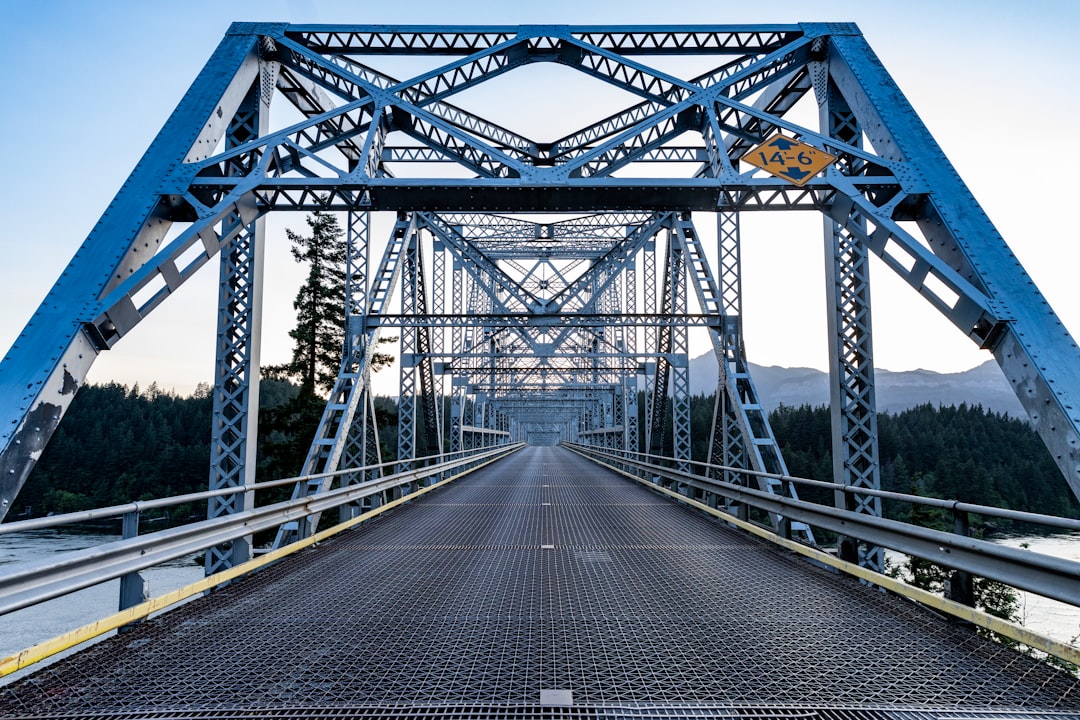Steel bridges, symbols of engineering prowess and architectural elegance, grace landscapes worldwide. Their design, however, is a complex undertaking requiring a deep understanding of structural mechanics, material science, and construction techniques. This comprehensive guide delves into the key aspects of designing these magnificent structures.
1. Initial Concepts and Load Analysis: Laying the Foundation
The design process begins with a thorough understanding of the project’s requirements. This involves defining the bridge’s purpose (e.g., carrying vehicular traffic, pedestrian walkways, or railway lines), determining its location and the surrounding environment (considering seismic activity, soil conditions, and potential environmental impacts), and establishing the desired lifespan. Crucially, a comprehensive load analysis is performed. This involves identifying all potential loads the bridge will experience, including:
- Dead Loads: The weight of the bridge itself, including the deck, beams, girders, and other structural elements.
- Live Loads: Loads imposed by vehicles, pedestrians, and other moving elements. Design codes specify minimum live load requirements based on the intended use of the bridge.
- Environmental Loads: Loads due to wind, snow, ice, and temperature variations. These loads can significantly impact the bridge’s stability and structural integrity.
- Seismic Loads: In seismically active regions, earthquake loads are crucial considerations, requiring specialized design techniques to ensure the bridge can withstand ground shaking.
Accurate load analysis is paramount; underestimation can lead to catastrophic failures, while overestimation can result in unnecessary cost increases.
2. Material Selection and Structural Design: Choosing the Right Steel
Steel’s high strength-to-weight ratio, durability, and versatility make it a preferred material for bridge construction. However, selecting the appropriate steel grade is critical. Factors to consider include:
- Yield Strength: The stress at which the steel begins to deform permanently.
- Tensile Strength: The maximum stress the steel can withstand before fracturing.
- Ductility: The steel’s ability to deform plastically before failure, providing a degree of warning before collapse.
- Weldability: The ease with which the steel can be welded, a crucial aspect of steel bridge construction.
Different steel grades are available, each optimized for specific applications. The structural design itself involves selecting appropriate structural elements (e.g., beams, girders, trusses, arches) and their arrangement to effectively transfer loads from the deck to the supports. Advanced techniques like finite element analysis (FEA) are employed to simulate the bridge’s behavior under various load conditions, ensuring structural integrity and optimizing the design.
3. Finite Element Analysis (FEA) and Optimization: Refining the Design
FEA is an indispensable tool in modern steel bridge design. It involves dividing the bridge into numerous smaller elements and using computational methods to analyze the stress and strain distribution within each element under various load scenarios. This allows engineers to identify areas of high stress concentration and refine the design to optimize structural performance and minimize material usage. Optimization techniques, often integrated with FEA, further enhance the design by exploring different design parameters (e.g., member sizes, material properties, geometry) to achieve the most efficient and cost-effective solution while meeting all performance requirements.
4. Detailing and Construction Considerations: From Design to Reality
Detailed drawings are essential for the successful construction of the bridge. These drawings specify the dimensions, connections, and fabrication details of all structural elements. Careful consideration must be given to:
- Connections: The design of connections between different structural members is crucial for ensuring the overall stability and strength of the bridge. Welded connections are common, but bolted connections are also used, depending on the specific design requirements.
- Corrosion Protection: Steel is susceptible to corrosion, necessitating protective measures such as painting, galvanizing, or other corrosion-resistant coatings.
- Fabrication and Erection: The design must consider the practical aspects of fabrication and erection, ensuring that the bridge can be efficiently constructed without compromising safety or quality.
- Accessibility and Maintenance: The design should incorporate features that facilitate future maintenance and inspection, ensuring the long-term serviceability of the bridge.
5. Codes, Standards, and Regulations: Ensuring Safety and Compliance
Steel bridge design is governed by various codes, standards, and regulations that ensure the safety and reliability of the structure. These codes specify minimum design requirements for loads, materials, and construction methods. Adherence to these codes is crucial for obtaining necessary permits and approvals. Examples of relevant codes include AASHTO (American Association of State Highway and Transportation Officials) and Eurocodes, depending on the location of the project. Regular inspections and maintenance are also essential to ensure that the bridge continues to meet safety standards throughout its lifespan.
Designing steel bridges is a multifaceted endeavor that blends scientific principles, engineering expertise, and artistic vision. By carefully considering the factors outlined above, engineers can create structures that are both aesthetically pleasing and structurally sound, providing safe and efficient transportation for generations to come.
SEO Tags:
- Steel Bridge Design
- Bridge Engineering
- Structural Engineering
- Steel Structures
- Bridge Construction




